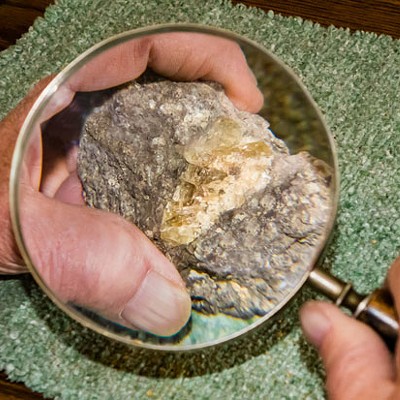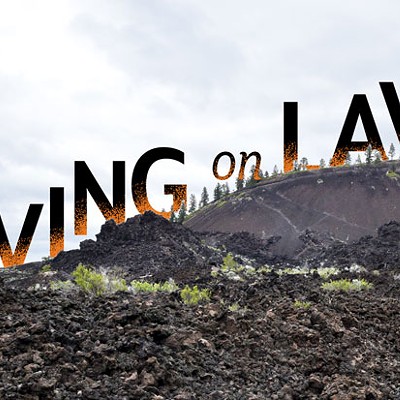Every night, just as I lay my head on my pillow and slowly sink into a peaceful sleep, my eyes snap open. I think, "Where's the flashlight!? Where's the fire extinguisher and my whistle!?"
Scoff if you will, but like it or not, beautiful Central Oregon, those glittering snow-capped volcanic peaks are magnificent scenery, but right now, while you're reading this, there are forces pushing and shoving the earth under our feet. To keep an eye on the heartbeat of the USA's (so-called) solid earth, USGS (United States Geological Survey) geologists have seismographs hooked to Mother Earth all over the Northwest that measure her movements, 24/7/365.
These little "black boxes" are most times overlooked by people, as the USGS geologists want to keep them hidden and out of harm's way. I've stumbled over a couple, and I'm sure others of you have.
They send signals to a listening device via satellite, a signal that's the very heartbeat of our grand old Earth; it's not a question of "if," but "when" the rhythm of our planet will be suddenly interrupted by mayhem and motion, and when it does, the warnings will come to us through those little seismographs that tell us how powerful it is.
If you're in your home eating supper when it happens, don't dive for cover; get out of the house and stand in the open (but not near power poles and wires)! If leaving the house isn't in the cards, grab up your flashlight, fire extinguisher and whistle and lay down next to your sofa or bed. Do not dive under a table! The roof may come crashing down and squash you like a bug. Lying down next to a sofa, bed, washer, dryer or bureau may better protect you. With your flashlight you will be able to see what's happened when the motion stops.
Here in the Pacific Northwest, we can expect a 9+ earthquake off the coast of Oregon and Washington. However, because Bend is located so far from the excepted epicenter, damages will vary, depending on building construction and local geology. But the Boy Scout motto, Be Prepared will probably get you out of most trouble.
This scenario is not something out of a horror movie, it's for real; it has happened before and will happen again. And here's why...
Out in the Pacific Ocean, about 400 miles west and a little north of where we're standing in Central Oregon, there's an enormous 300+ mile-long hump on the Earth relentlessly growing. Geologists call the monster the Juan de Fuca Ridge; it's made up of magma (lava) slowly coming to the surface, and is located in the Cascadia Fault Zone that stretches from Northern BC to Northern California!
The ridge is pushing two great slabs of ocean floor both west and east as it slowly ads material to Earth's crust. One of these great slabs of ocean crust is known as the Pacific Plate, which is moving west toward Asia. The other slab is the Juan de Fuca Plate, moving east toward North America (where we live)‚ and they're on a tectonic collision course, with the Juan de Fuca plate sliding (subducting ) under the North American Plate.
The problem is, it's not a smooth action; it's plate-against-plate grinding along with relentless energy impossible to measure or imagine, the weight of the Earth's surface is holding everything more-or-less fast—for now. When the plates move, which they will, it could be a sudden jolt that will create an earthquake of at least 9+ magnitude, and that, good neighbors, will be "The Cascadia Big One!"
That quake won't be a short blast of energy along the surface in the Earth's upper crustal zone—like those little 6.0 dazzlers in California. It will be bigger, deeper, and go on for perhaps 3–4 minutes, with dozens of aftershocks, maybe for days, even months. And we can't even imagine the destruction from the tsunamis on the coast...
If you don't want to believe it, go to pnsn.org/outreach/earthquakesources/csz and look at the charts.
Back in 1988 geologists thought there was little chance for a dreadful event that would unleash an earthquake of 9 or higher on the Richter scale. But today's science addresses a greater risk, and who knows what it's going to be like as we upgrade the data in 2015.

























